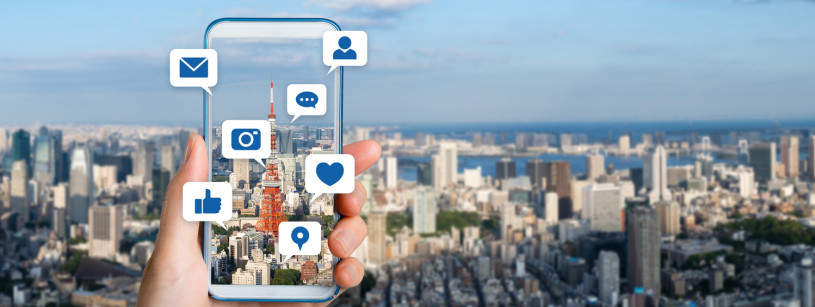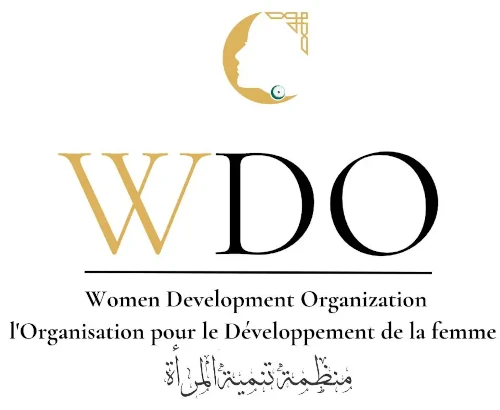Human trafficking is defined by the United Nations Protocol to Prevent, Suppress and Punish Trafficking in Persons, especially Women and Children, as: “the recruitment, transportation, transfer, harboring or receipt of persons, by means of threat or use of force or other forms of coercion, of abduction, of fraud, of deception, of the abuse of power or of a position of vulnerability or of the giving or receiving of payments or benefits to achieve the consent of a person having control over another person, for the purpose of exploitation”1. The Protocol goes on to add that exploitation also includes, at a minimum, forced labor or services, sexual exploitation, slavery or similar practices, and servitude or the removal of organs1.
“Trafficking in persons”, “human trafficking” and “modern slavery” are all umbrella terms that are often used interchangeably to refer to a crime where traffickers exploit adults and children for profit by compelling them to perform labor or participate in commercial sex2. Naturally, many of the practices associated with and committed in relation to trafficking are prohibited under international human rights law. Examples of violations of human rights include: debt bondage, slavery, child sexual exploitation, servitude, forced marriage, and enforced prostitution3. Though human trafficking is often compared to or used interchangeably with people smuggling, they are in fact two entirely separate issues. Generally, individuals who pay a smuggler in order to gain entry to a country illegally do so willingly, as opposed to victims of human trafficking, who are often either tricked or forced into entering other countries4. Similarly, not all missing persons are victims of trafficking, and the majority of trafficked victims are not kidnapped, but rather groomed by people they already know5.
Unfortunately, due to the hidden nature of this crime, the true scale of human trafficking is unknown and impossible to fully scope. It is estimated that there are currently 49.6 million victims of human trafficking worldwide, though actual cases may very well greatly surpass this number6. The breakdown of these numbers are approximately: 27.6 million are exploited for labor, 12% of which are children; 17.3 million are in forced marriage6. Additionally, human trafficking is largely a gendered issue, as about 71% of trafficking victims are women and girls6.
Per the definition, the crime of human trafficking consists of three core elements: the act, the means, and the purpose7. While these three core elements can be met in a variety of ways, they can sometimes vary according to the type of trafficking. The below infographic illustrates the different elements and ways in which each element can be met. All three elements are essential to establish the crime of trafficking.
The core elements of the crime of trafficking in persons, adapted from United Nations Office on Drugs and Crime:

Trafficking can happen in any community and victims can be of any gender, race, age or nationality. There are many ways in which traffickers may lure victims into trafficking situations, which include: violence, manipulation, false promises of well-paying jobs, and romantic relationships8. Traffickers typically look for ‘easy targets’, so victims may be targeted for the following reasons, among others: psychological and/or emotional vulnerabilities, economic hardship, lack of a social safety net, natural disasters, and political instability8. Victims are then forced to work in various industries or sectors, such as in factories, construction sites or in agriculture without any pay or an insufficient salary, or forced into sex work/prostitution7. They often live in fear of violence and in inhumane conditions. Some victims may even be tricked into having their organs removed and harvested7. Children are oftentimes forced to serve as soldiers or forced to commit crimes for the benefit of their traffickers7.
Unfortunately, due to the horrific nature of trafficking, the consequences for victims are oftentimes psychological and not just physical. Some of these indicators include9:
Psychological and Behavioral:
- Developing general feelings of shame, guilt, self-blame, helplessness and humiliation;
- Suffering from sleep or eating disorders;
- Becoming addicted to alcohol and/or drugs as a coping mechanism or as a method of control used by their traffickers;
- Suffering from shock and denial, or otherwise displaying symptoms of post-traumatic stress disorder (PTSD), panic attacks, anxiety and depression;
- Experiencing “trauma bonding” or Stockholm Syndrome with the trafficker, positively identifying with the trafficker and ultimately believing that the trafficker is a loving partner or parent; or
- Becoming emotionally numb, detached and disassociated from the physical and psychological trauma.
Physical Effects:
- Chronic back, visual or hearing problems from work in the agricultural, construction or manufacturing industries;
- Signs of physical abuse, which may present as bruises, broken bones, burns and scarring;
- Skin or respiratory problems caused by exposure to chemicals;
- Untreated chronic illnesses, such as diabetes or cardiovascular diseases;
- Reproductive health problems, including sexually transmitted diseases (STDs), pelvic pain and other injuries caused by sexual assault, urinary tract infections (UTIs), or forced abortions; or
- Infectious diseases such as hepatitis and tuberculosis, which are more easily spread in unsanitary and overcrowded environments with limited ventilation.
Of course, these are not the only indicators that arise in trafficking victims, and physical and psychological trauma may present in other ways.
Everyone has the possibility of coming across a human trafficking situation. While some forms of human trafficking, such as forced sex work, may remain very well hidden, other forms, such as persons trafficked for the purpose of forced labor, may be hidden in plain sight, even in places such as construction sites, restaurants, agricultural fields, and hotels. Traffickers may use intimidation tactics in order to keep the victims in a fearful state and unable to reach out for help. However, there are several indicators and signs which everyone can be on the look out for in order to identify potential victims of trafficking. The following list of indicators is not all comprehensive, but here are some red flags that could alert a person to report a potential trafficking situation10–12:
- Living with employer or at place of employment;
- Poor living conditions;
- Inability to speak to individuals alone;
- Avoiding eye contact and social interaction, especially with authority figures or law enforcement;
- Answers appear to be scripted;
- Employer is holding identity documents;
- Unpaid or paid very little;
- Has few or no personal possessions;
- Is not in control of their own money, often with no financial records or bank accounts;
- Working excessively long hours without proper resting periods;
- Appearing malnourished, poor physical or dental/oral health, untreated sexually transmitted diseases;
- Lacks general knowledge of whereabouts, may not know what city they are in;
- Tattoos/branding, oftentimes on neck and/or lower back;
- Under 18 and in prostitution;
It should be noted that healthcare is often one of the very few professions in which staff meet victims while they are being trafficked12. Those working in healthcare need to be mindful when working with patients as they are the most likely to be able to identify victims due to the nature of their injuries, meaning that healthcare workers can intervene in such cases and provide referrals for assistance.
Although psychological and physiological indicators may help in identifying potential victims of trafficking, it is not always safe to raise the flag on such cases. Due to the nature of trafficking, any alert to the situation can cause retaliation from the trafficker and may cause harm to the individual reporting the case and/or to the person being trafficked10. Therefore, anyone who suspects they have come across a trafficking victim, must be careful and only contact law enforcement and/or a trusted organization that can assist with providing medical care and shelter in addition to the critical services in order to extract the victim from the trafficking situation 10-12.
Ultimately, human trafficking is a critical issue that is occurring worldwide at rates that are still largely undetermined. While it may be difficult to completely eliminate the practice due to its illicit nature, victims can at least be identified and assisted accordingly by participating in awareness campaigns and educating the mass public on how to identify hidden in plain sight situations.
References:
1. United Nations. (n.d.). Protocol to Prevent, Suppress and Punish Trafficking in Persons Especially Women and Children, supplementing the United Nations Convention against Transnational Organized Crime. OHCHR. Retrieved 26 July 2023, from https://www.ohchr.org/en/instruments-mechanisms/instruments/protocol-prevent-suppress-and-punish-trafficking-persons
2. United States Department of State. (n.d.). Understanding Human Trafficking. United States Department of State. Retrieved 26 July 2023, from https://www.state.gov/what-is-trafficking-in-persons/
3. OHCHR. (n.d.). OHCHR and trafficking in persons. OHCHR. Retrieved 26 July 2023, from https://www.ohchr.org/en/trafficking-in-persons
4. EUROPOL. (n.d.). Trafficking in Human Beings. Europol. Retrieved 26 July 2023, from https://www.europol.europa.eu/crime-areas-and-statistics/crime-areas/trafficking-in-human-beings
5. Operation Underground Railroad. (n.d.). The Different Types of Human Trafficking. Retrieved 26 July 2023, from https://ourrescue.org/blog/different-types-of-human-trafficking
6. Stop The Traffik. (2022, February 15). Definition and Scale—STOP THE TRAFFIK. STOP THE TRAFFIK - People Shouldn’t Be Bought and Sold. https://www.stopthetraffik.org/what-is-human-trafficking/definition-and-scale/
7. UNODC. (n.d.). The Crime: Defining Human Trafficking. United Nations : Office on Drugs and Crime. Retrieved 26 July 2023, from //www.unodc.org/unodc/en/human-trafficking/crime.html
8. US Department of Homeland Security. (n.d.). What Is Human Trafficking? | Homeland Security. Retrieved 26 July 2023, from https://www.dhs.gov/blue-campaign/what-human-trafficking
9. Office On Trafficking In Persons. (n.d.). FACT SHEET: IDENTIFYING VICTIMS OF HUMAN TRAFFICKING. Retrieved 27 July 2023, from https://www.acf.hhs.gov/archive/otip/fact-sheet/fact-sheet-identifying-victims-human-trafficking
10. United States Department of State. (n.d.). Identify and Assist a Trafficking Victim. United States Department of State. Retrieved 27 July 2023, from https://www.state.gov/identify-and-assist-a-trafficking-victim/
11. Nevada Attorney General. (n.d.). Human Trafficking—Warning Signs of Human Trafficking. Retrieved 27 July 2023, from https://ag.nv.gov/Human_Trafficking/HT_Signs/
12. New York State Department of Health. (n.d.). How to Identify a Trafficking Victim. Retrieved 27 July 2023, from https://www.health.ny.gov/prevention/human_trafficking/identification.htm




